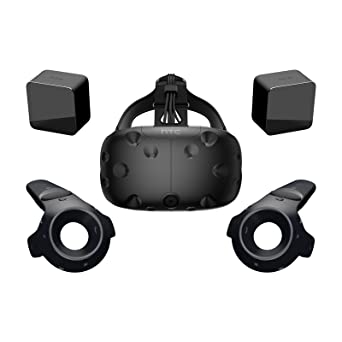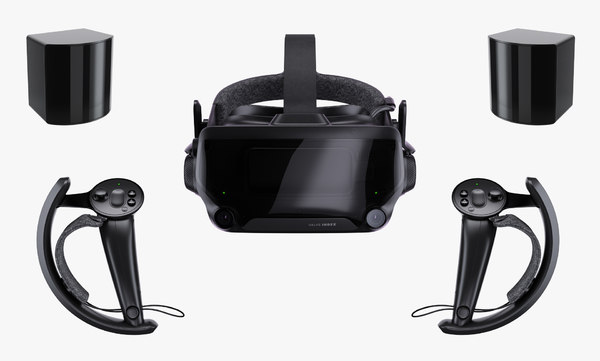With the rise of virtual reality, we now have more headset options than ever before. Each VR headset has its own pros and cons, but the HTC Vive vs Valve Index are two stellar options. These two headsets tend to be compared from time to time because they’re both high-end PC-based virtual reality systems. Both have their advantages, but which one is better for you? Let’s take a look at the pros and cons of each VR headset to see which is the best choice.
Curious about what is the better HTC VR product? Check out our comparison of the HTC Vive vs HTC Vive Pro 2!
What is the HTC Vive?

The HTC Vive is one of the most popular VR headsets on the market. It set a lot of standards in the industry and if you were a serious VR user, you most likely had the HTC Vive. Also, most large streamers were using the HTC Vive which became a really popular choice among content creators. The tracking was something completely new and built a new standard in the VR industry. In addition, the resolution pushed the boundaries of what was thought to be possible.
HTC Vive Specs
The HTC Vive is one of the most fully-featured VR headsets available. It offers high-quality visuals, a large field of view, and a plethora of tracking options. Here are the Vive’s specs:
FOV: 110°
Resolution: 2160 x 1200
Screen refresh rate: 90 Hz
Tracking system: SteamVR Tracking
Connectivity: USB 2.0, HDMI, and DisplayPort
Pros
- Great tracking
- Room-scale VR
- Great resolution
- Compatible with nearly everything
- Motion controllers are great
- Can be wireless with an adapter
Cons
- The refresh rate isn’t the best
- Setup can be tedious
- Needs external sensors
- Needs to be connected to a PC via a cable
What is the Valve Index?

The Valve Index is the latest headset from Valve, creators of the world’s most popular digital distribution platform, Steam. The Index uses Steam VR to create an immersive VR experience, but it offers some improvements over the original Vive VR headset. The Index is designed to be an all-in-one VR solution, so it doesn’t require a PC or an external GPU. The Index’s high-end computer is built directly into the headset, so this device is perfect for beginners and veterans alike. The Index features a large field of view and high-quality visuals, making it a great choice for all types of VR content. It also has room-scale tracking and advanced haptics, making it one of the most immersive VR headsets on the market. The Index is a great overall VR headset and is sure to provide an impressive VR experience.
Valve Index Specs
The Valve Index is a powerful VR headset with many advantages that make it a great choice for VR beginners and veterans alike. Here are the headset’s specs:
FOV: 130°
Resolution: 1440 x 1600
Screen refresh rate: 120 Hz
Tracking system: SteamVR Tracking
Connectivity: USB 2.0, HDMI, and DisplayPort
Pros
- Top-tier Field of view
- Smooth and solid refresh rate
- Some of the best tracking on the market
- No tearing or errors
- Great support and game pool
Cons
- Extremely expensive
- Tethered and can be clunky
- Requires a high-end PC
Differences Between The HTC Vive and Valve Index
- Refresh Rate: The Valve Index has a better refresh rate
- Price: The Valve Index is near twice the price of the HTC Vive
- Resolution: The HTC Vive sports a better resolution
- Connectivity: The Valve Index is tethered and the HTC Vive is tethered but supports wireless with an adapter
Conclusion: Which is Better?
Although both are great VR headsets, the Valve Index is the better headset. The Valve Index is more powerful, has a smoother refresh rate, better tracking, a larger compatibility range, better controllers, and a mind-blowing field of view. The price of the Valve Index is the most unappealing aspect, but if you can afford it, it won’t disappoint. The HTC Vive is a better visual experience at the cost of a less smooth experience but is still an excellent premium VR headset.
